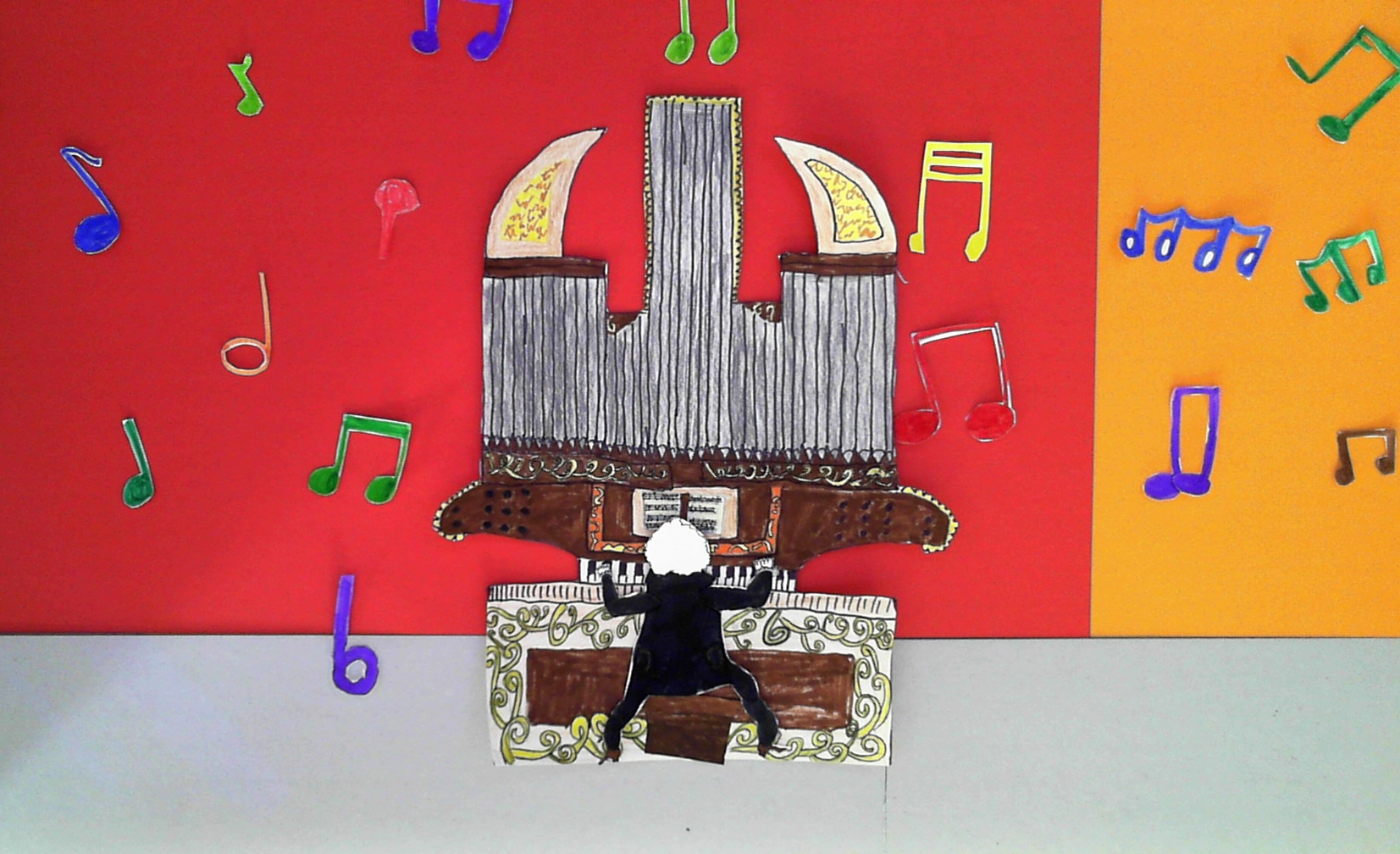Sebastian’s Watery Realm
and other educational projects
Sometimes children observe that display cases and aquariums have a number of things in common. Moreover, since the name Bach is also the German word for ‘stream’, they note that fish also swim in a ‘Bach’! By the way, puns like this are known to have been coined back in the late eighteenth century.
‘Sebastian’s Watery Realm’ started in 2013, in an Alliance for Education by the Bach Museum with the after-school club and friends’ association of Karl Liebknecht Primary School. Since then, artist Karl Anton has taught painting classes to children from the school and organized excursions to the Bach Museum and other museums in Leipzig in order to hone their senses and perception. So far, nearly 100 pupils have taken part.
Projects in which youngsters spend a protracted period studying Bach by means of creative activities are especially memorable. The exhibition of 2015 shows the results.
Can we pick the Bach flower or catch the Bachfisch (fish in the brook)? What if Bach has disguised himself as Bacchus, and how fast is the Bachschildkröte (pond turtle)?
About fifty children and youngsters from the Leipzig KINDERATELIER have approached the topic of Johann Sebastian Bach in a number of different ways and created a series of graphic art full of wit, irony and the enjoyment of wordplay. In addition to these works in small format there are six large busts of the composer, constructed from a variety of materials. Made of wire, wood, porous concrete, or plastic bottles, these sculptures are not just visual objects but serve a number of playful functions: as listerning stations, carriers of messages, or conundrums. This special exhibition was prepared in colloboration with the KINDER-ATELIER / KAOS, Trägerverein Kindervereinigung Leipzig e.V.
Schoolchildren are rarely electrified by terms like ‘concerto grosso’ or ‘Coffee Cantata’ when studying the works of Johann Sebastian Bach. Instead, they find modern types of media far more interesting! However, thanks to the i nclusion of interdisciplinary teaching in the curriculum in Saxony, these very different areas can now be gainfully combined.
nclusion of interdisciplinary teaching in the curriculum in Saxony, these very different areas can now be gainfully combined.
In the 2014/15 school year, pupils from Christoph Arnold Primary School and No. 68 Middle School in Leipzig spent a week studying Bach’s works and producing their own animated films during their music and art lessons. Even schoolchildren who initially weren’t keen on the arts found themselves fascinated by the medium of film, including the production process and the technology involved. Gratifyingly, people listen to music far more attentively – in all its nuances and several times over! – if they are planning to make a film about it.